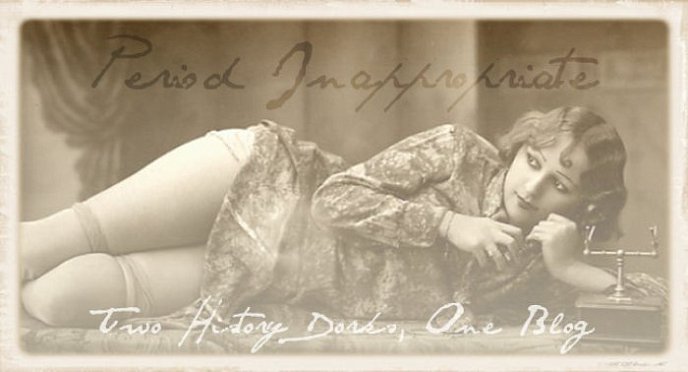Someone please hit me over the head and put me out of my misery. My thoughts are spinning 'round and 'round, swirling in a vortex filled with floor cloths, dress designs, domestic manuals, oil lamps, stone churches and chickens. Yes, chickens.
Mr. Flattery and I are in the midst of planning out our new first person characters for this upcoming summer season at The Museum. We will be working in the house I have called "my" house for the past year and a half, but this will be the first time we are officially together. Heck, this will be the first time I have been officially placed with anyone, our staffing doesn't normally allow more than one person per site, but this year my house is getting re-vamped to better represent a working farm and thank God and all that is holy, someone in management actually realized that there is no way one person could manage all there is to do alone.
The museum has been portraying "The Years", meaning an 1861-1865 cycle. I came in at the end of '64, Mr. Flattery at the end of '65. Now we have cycled back to '61 to coincide with the 150th anniversary of the Civil War and will get to experience things from the start. A fresh start and a new farm project, I have a feeling we have our work cut out for us.
I have the tendency to go overboard in my planning for anything and everything, and creating a new character is no exception. There is so much to think about, I've always said doing first person requires you to have a lifetime of memories to draw from that don't actually exist, and one must be able to do so at a moment's notice. For us our personas will develop during the summer months and will culminate in the fall with the "Supper Season".
The museum hosts historical dinners set in different eras, one of which takes place in my (sorry Mr.Flattery, OUR) house. They last about 3 hours during which you are in character constantly. You had better have a lot to talk about or it's going to be a loooong night. It's not a one-shot deal either, for each era there are around 6 different dates visitors can choose from to attend, so we can be doing this 3 hour-dinner upwards of 6 times. Again, very important to have plenty of conversation material.
If you have seen the cheerleading movie "Bring it On" you may remember the head cheerleader Torrance (played by Kirsten Dunst) saying that for their squad, cheering at a football game is more like a practice. What they are really preparing for is the big cheerleading championship they win every year. That's how I feel about this year- the summer season is really a long drawn-out rehearsal for the Suppers. We lost several of our experienced first-person staff recently and I'm feeling the pressure to be in the lead for the new people. Is it hot in here? I feel a slight panic attack coming on.
I do sincerely apologize if my this post is not very eloquent or even making any sense, but as I said my mind is a swirling vortex. As I am writing I keep thinking about how I want to do more research on painted wood floors. By the way,thank God for my iPhone. Whenever one of these research attacks hits me and it feels like I want to know the answer RIGHT NOW I can always pull out my iPhone and Google it. Ahhhh, Google. I have a feeling Mr. Flattery is going to have to sedate me on a regular basis to prevent first-person-persona-planning overload. I have even begun to have conversations in character in my head. Is it possible for my new character to develop into a multiple-personality disorder? Again, someone please knock me out!








